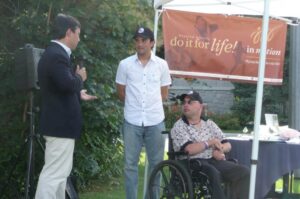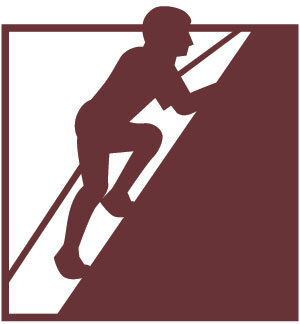
11 Aug 2008
Entrepreneurial Toolkit #5: The Power of Two (or Three)
As an investor, the most important lesson I’ve learned over the years is that great companies are built by great teams. Furthermore, great teams rarely are one superhuman “A” player surrounded by a supporting cast of “B” players. And unlike the Borg Collective which seeks to “… add your biological and technological distinctiveness to our own”, great management teams need to have a set of complementary, yet overlapping, skill sets. Most of us know the example of how Steve Wozniak the brilliant hardware designer teamed up with the uber-persuasive Steve Jobs to create Apple, an iconic Silicon Valley startup success story. While that partnership didn’t last forever, it’s pretty clear that the fusing of the talents of these two brilliant individuals directly led to Apple’s early success. I encourage you to read more in a “must read” book I’ve recommended earlier, Founders at Work. Jim BalsillieMike Lazaridis Here in Waterloo, Research in Motion (RIM) would not be today’s superstar company unless Jim Balsillie joined engineer, founder, Mike Lazaridis. Until Jim joined Mike in the early 1990’s, RIM had long remained a typical engineering oriented company doing about $500 000 annual […]

8 Aug 2008
Celebrating the Numerically Auspicious Flavius Octavius
Definitely outshining the Olympian brouhaha, today we gathered to celebrate the birthday of hitherto little known Flavius Octavius. We were honoured to have a reading by the eminent historian and raconteur, Peter Scott, who narrated a gripping saga, reflecting his very latest research. An excerpt of that esteemed work by Herr Doctor Professor Scott follows: Flavius OctaviusBorn 641Cardinal 662“anti-pope” 669 in Oc, FranceDied 721 well known for his bulls, which had many issuesfather was an ocarina maker and playermother, an occultist (also took in laundry)At the time of his papacy there were several antipopes – challengers to the papal authority in Rome – besides Octavius of Oc, there were Sardonicus of Avignon, Herbivorus of Seville and Randy of Burnham on Crouch. Octavius’ deeds are the stuff of legend.He is venerated in Oc today as the patron saint of stray cattle. It is said that his bulls often escaped from their enclosure. On one famous occasion, when a most large and ferocious bull was terrorising the honest citizens of Oc, the saintly Octavius, still in his ceremonial robes, caused his bearers to lower the palanquin in which he was riding. He […]

2 Aug 2008
Brands, Trust and The Fine Print
In today’s mail I received a tantalizing offer from Bell Canada Long Distance. It promised the ability to “Call the world without limits” by delivering “Unlimited World Long Distance Plan $29.95/mo.” With calls to over 50 countries plus Canada and USA included, on the face of it, that’s a pretty attractive offer. But, I’ve learned that, when dealing with the telecoms industry whether landline or wireless, it pays to read the fine print. And, sure enough, in very small type at that bottom it says “excludes calls to mobile phones and wireless devices.” Sadly, when I call overseas, where mobile penetration is generally at or even above 100 mobiles for 100 population, over 95% of my calls are to mobile phones. So, far from being unlimited, this plan is really a bit of a “bait and switch” which might well increase my calling costs. In the monthly billing cycle, the arrival of the first bill post sign up would almost certainly make any customer’s blood boil. At a macro level, I’m really curious as to what such deceptive marketing campaigns say about customer relations and basic trust in the 21st […]

30 Jul 2008
RunTheDream in Elora: Social Enterprise Reaches 3400 / 8500 km.
A little over 4 months ago we first wrote about an astonishing social enterprise, Jonathan Howard (see photo) and his Run The Dream (RTD). Jonathan and Terry with Michael Chong, MP To refresh your memory, take a look at our 22 March, 2008 post by clicking here: With amazing youthful enthusiasm, having Just turned 25 today, Jonathan Howard ran into Elora to a welcome by a Michael Chong, MP, Mayor Joanne Ross-Zuj, a number of parents who live daily with Autism Spectrum Disorders (ASD) and a good contingent of local supporters. It goes without saying people were inspired and he was very warmly greeted. It’s really interesting how things that start slowly eventually snowball. There are always challenges and false starts in any truly entrepreneurial enterprise. The snowballing of viral propagation is famous in the world of web startups. Jonathan has witnessed a similar effect with Run The Dream. One shining example of that is Terry Robinson (see photo). Terry, a co-worker at Ontario Public Service and an accomplished two-time Para-Olympian (Seoul and Barcelona), was so inspired by Jonathan’s social vision to commit to a leave of absence from his […]

10 Jul 2008
Rogers Climbdown – Egg on Face Purely from Rogers Shooting Themselves in the Foot
Yesterday’s climbdown by Rogers on 3G iPhone (in fact, quicly extended to all smart phones) data pricing was nothing short of spectacular. Since the weekend, I’ve watched as many of my colleagues in the Blogosphere have pushed a campaign of long term customer lobbying over the goal line. Clearly, in addition to influential bloggers, Apple is the industry titan that has been able to unclog an uncompetitive wireless market in Canada unlike any other company (or government) so far. The story has been well covered, with a good selection of the chronology, below: Daniel Smith/Smithereens Blog: “Apple Flips Rogers a Bird A Week Before Canadian iPhone Launch? (Plausible Rumor)” Mark Evans: “Is the iPhone a PR Fiasco for Rogers” and “Who at Rogers Blew the iPhone”? Jim Courtney in Skype Journal: “Score One for the Blogosphere – Immense PR Turmoil – Rogers Caves” IT In Canada: “Did Rogers Try the Patience of Jobs?” However, apart from the obvious power that an internet-engaged base of consumers now has over even the largest companies and apart from a major victory for grassroots campaigning, there is an even bigger lesson to be learned […]

10 Jul 2008
Entrepreneurial Toolkit Summary: It’s All About Personal Growth
New York Times on Sunday contained an article which immediately caught my attention, as it appears to provide the missing piece pulling together all of my recent postings outlining an “Entrepreneurial Toolkit”, so far consisting of these five core skill sets: “Fearless Passion” “Don’t Drink Your Own Bathwater” “Embrace Change” “Taste the Cash Burn” “The Power of Two (or Three)” (coming soon) The article, “If You’re Open to Growth, You Tend to Grow”, New York Times, 6 July, 2008, in extolling an individual’s openness to change and personal growth, really provides a common thread, weaving together the above skills. To quote Carol Dweck of Stanford University, “People who believe in the power of talent tend not to fulfill their potential because they’re so concerned with looking smart and not making mistakes. But people who believe that talent can be developed are the ones who really push, stretch, confront their own mistakes and learn from them.” The notion that nurture trumps talent, is an interesting one. It underscores why defining some great attributes for an entrepreneur in my Entrepreneurial Toolkit is such a good idea. For the right people, if they […]

8 Jul 2008
Entrepreneurial Toolkit #4: Taste the Cash Burn
Whether you run a startup (pre-revenue and running on fumes), a larger, later stage company (with actual revenues and earnings) or even a public technology company, the topic of cash should never be far from your consciousness. And, it goes without saying that keeping tabs on cash is generally even more germane in social enterprises. For many early stage entrepreneurs, skilled in technology, marketing and strategy, the notion of vigilance around cash burn might seem mundane, something to be avoided or delegated. There is no question that companies endowed with more cash on their balance sheets can act more strategically. Conversely, It is the rare company indeed that isn’t significantly cash constrained at some part of its life cycle. As a result, you need to be on top of cash burn and not let cash crises catch you off guard. Of course your need, or even better should virtualize, solid financial and accounting management skills. Notwithstanding this, as CEO, cash needs to figure as a constant item in your personal mental checklist. In the New Venture 2.0 Playbook, discussed in much more detail in an earlier blog post here, Grover […]
21 Aug 2008
ARISE Fair Sun …
The reference to Romeo and Juliet was apt when last week I had the pleasure to meet with Ian MacLellan, of ARISE Technologies (TSX:APV)The Founder of ARISE, Ian is now Vice Chairman and Chief Technology Officer and I met him just after a great quarterly release to the public markets.Having worked tirelessly for close to 12 years, Ian is a living example of the qualities we recently outlined in a set of blog posts entitled “Entrepreneurial Toolkit”:Fearless Passion Don’t Drink Your Own BathwaterEmbrace ChangeTaste the Cash BurnThe Power of Two (or Three)First of all, rarely have I seen someone more passionate about a business vision than Ian. His company vision, almost a mantra, is to “take solar mainstream” and that hasn’t changed since Ian first explained ARISE to me many years ago. In fact, I believe it was the founding vision way back in 1996. Indeed, even the company name itself, shortened from “Appropriate Renewable Intelligent Sustainable Energy” is a passionate embrace of Ian’s vision.Having pioneered in the solar industry long before Green Technology was fashionable as it is today, particularly in Canada’s challenging technology funding ecosystem, meant that the […]